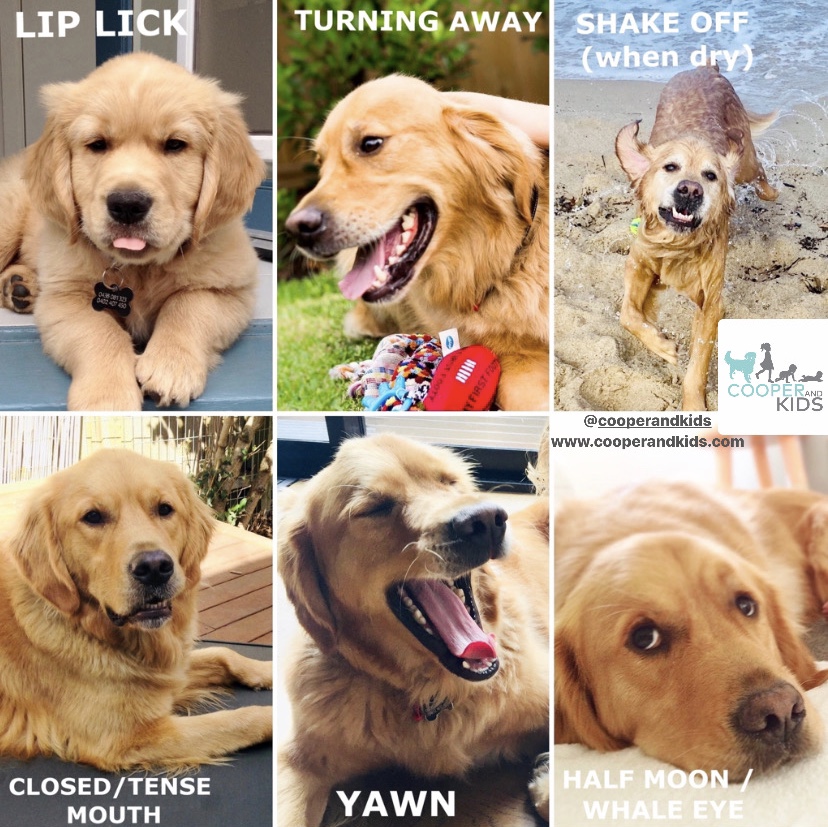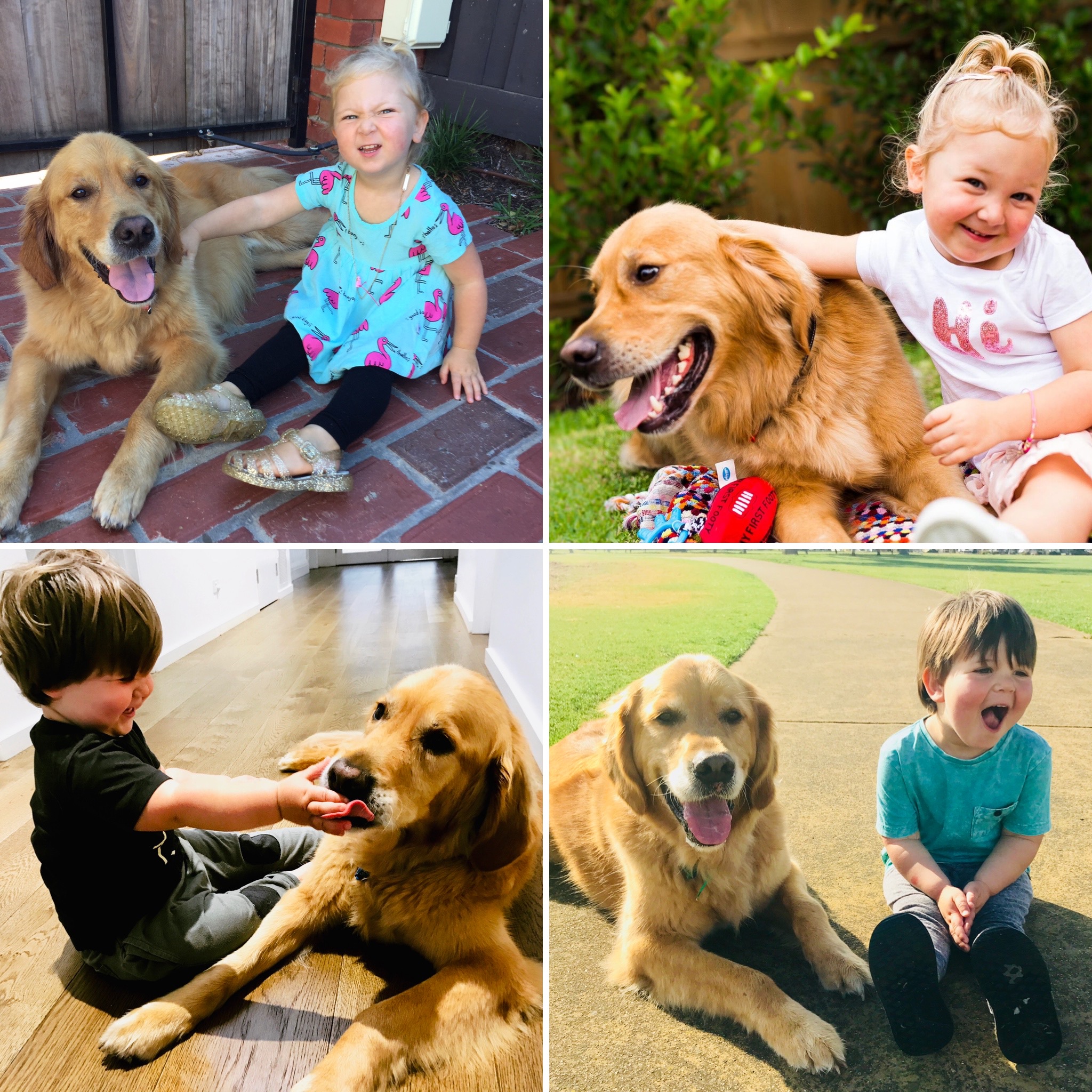According to the Australian Veterinary Association, “most dog bites take place in homes with familiar family pets, and most people bitten by dogs are children under 10 years of age.” These numbers are just too high. I want to share with you some tips for how becoming more aware of what our dogs are trying to tell us can help save lives, the importance of teaching this to our children and how doing this will also help your dog to live a much happier life.
One of the most important things to note is that dogs and humans are two different species who communicate very differently. For example, we humans show affection with hugs and kisses but to some dogs this can actually be quite a scary thing. Dogs sniff other dogs backsides, we certainly don’t do that! It is up to us as dog owners, to really learn to listen and understand what our dogs are trying to tell us before it’s too late. Educating parents, grandparents, nannies, caretakers and all dog owners is key to helping prevent dog bites from happening in the first place.
I can put my hand up and say, I have made mistakes in my past, you will see them in the photos I use below. Until you have the knowledge and the information, it’s not your fault for not understanding, however once you have these tools, it really is so easy to see and hard to un-see.
Three very important tips to help you become more dog aware, create a more positive relationship with your dog and a safer environment for your children.
-
Warnings are good!
It’s very important not to punish a dog for giving warnings. A dog will communicate when they are feeling uneasy or uncomfortable in a situation and it is our job as the dog’s owner to see these signs, before they turn into a bite. It is in those moments that we must step back (or your child) and give the dog some space and some time out from what was happening. When a dog communicates with a growl or baring its teeth, although these may seem scary, these are forms of communication and we should be thankful for them and respect them.
It’s quite common to hear about dogs who bit “without warning,” especially when it was the family dog that bit. However, in most cases, the dogs’ warning signals either weren’t noticed, or they were punished and eliminated when people disciplined them for “being bad”. While we prefer a dog not feel the need growl, it’s far better that the dog warn when there is a problem rather than simply bite. If the dog is punished for giving warnings, not only is his communication tool lost but by having his growling suppressed, his anxiety about the situation may become more intense.


-
What to Look For and When to Intervene
Learning to understand body language can really be a huge way to avoid bites from happening. Once your dog can see that we are understanding what they are trying to tell us and we are respecting this, you will be able to build a much more solid relationship based on trust and respect.
I have a whole article on Body Language and how dogs Communicate so please make sure to have a read. Here are some basics…
Subtle signs that a dog may be uncomfortable are:
- A simple yawn
- Rolling their eyes (half-moon/whale eyes)
- Licking the lips
- Turning their head away
- Shaking off
- Excessive grooming such as scratching or licking
- Quick and shallow breathing
- Stiff body
- Tense facial muscles
- Closed mouth


More obvious signs include:
- The dog trying to escape or remove itself from the situation
- A little growl
- Baring their teeth
- A bite
Now that you know, start to look out for these signals at the dog park, when guests visit, during active play sessions, when meeting new dogs, and when children are near the dog. When you see these signs, take steps to make the situation more comfortable for the dog. And if it is your child that has made your dog feel uncomfortable, make sure to point this out to them so they start to learn too.
I have put a few comparison photos together to demonstrate a happy dog versus a dog trying to give off a message of discomfort, stress and/or avoidance.
Based on the signs I have listed above; can you tell how Cooper is feeling in these photos?

Yep you guessed it…
- Top Left: Happy relaxed Cooper.
- Top Right: This looks like a “Kiss to Dismiss”. Lots of people think their dog licking a child is cute. Often (not always) it is their way of trying to move a child away from them. I can tell that Cooper is uncomfortable here as the rest of his face is also very tense. I would say Harper is too close and he is trying to push her away.
- Bottom Left: This is a clear yawn of discomfort from Cooper – our children should NEVER climb on dogs, ever! He is trying to communicate to me that he is not comfortable with what she is doing to him.
- Bottom Right: Cooper is happy and relaxed.

- Top Left: Cooper is relaxed
- Top Right: Cooper is showing avoidance behaviour here, he is turning away, his ears are pinned back and his whole body looks like it is trying to move away from Harper.
- Bottom Left: Kiss to Dismiss. This is not a happy kiss, Cooper’s face is tense and he is staring at me, trying to tell Paxton and me that he is not enjoying this moment.
- Bottom Right: Cooper is relaxed.
-
How to intervene.
Don’t react in a negative way, rather re-direct. Once you have learnt to watch out for subtle body language and you can see when your dog has had enough or feels uncomfortable, it is in these moments that you must redirect either your dog or your child away from each other. Call your dog over to you and give him a treat or a pat when he comes. Or if your dog is very comfortable where they are, say to your child “oh wow, come and see this” to move them away. If you keep jumping in and reacting to your child in a negative or angry way, your dog is learning that when your child comes close, you get mad. In turn forming negative associations with your child. We want to try keep it lite and positive. Rewarding good behaviours and creative a positive association for your dog of your children.
Give your dog space. Isn’t it interesting to see in those photos above that Cooper is most relaxed in the photos where the kids are giving him space. As soon as they get too close or try putting more than one hand on him, you can clearly see, he is not so comfortable. So make sure to give your dog the space he needs. Never let a child get too close or climb on top of your dog. Patting with one hand is enough. And let your child know that most dogs don’t like hugs and kisses as it invades their space and makes them feel uncomfortable. That takes me to my next point…
Never invade a dog’s personal space – Invites Decrease Bites. It is important that if any of you want to interact with your dog or any dog in general, that you call him to you – rather than approaching him, as he may not want a pat or a cuddle in that moment. If he doesn’t come, he doesn’t want to be patted – explain this and blow him a kiss or wave to him instead. I promise your dog will thank you for this.
Always explain to your child what happened so they can learn for next time and lead by example. It is in these moments, when you see these subtle signs, that you tell your child what has happened. Maybe the dog doesn’t enjoy hugs and kisses or being climbed on. Rather teach him to blow kisses from a distance as mentioned. Or explain that maybe the dog wanted a little more space. Kids learn from us! They model our behaviours, so make sure to only do what is acceptable and safe, they are always watching.
As always, please feel free to get in touch if you have any questions or your need some help.
Mel xox
PS. Make sure to head to our SHOP if you haven’t already! Spoil yourself and your dog!!



Comments (4)
Rachel aka Hamish the wee hounds mum August 19, 2020 at 8:07 pm
Thanks so much for this. The visuals made it so much easier to notice the examples that you had given. I know Hamish does the whale eyes and yawning, the latter more frequently. What I hadnt considered is my response to the kids and how that may make Hamish feel. When miss 2yo is harassing him inside his crate which is his safe space i can be abrupt with her sometimes as she knows not to invade his space in there. I like the idea of calling him over to cease this instead. Great tips as always. Even since our last chat I’ve noticed more. The video I just posted in Hamishs stories whilst he is chosing to jump up onto the step I notice he does it and yawns indicating he’s not feeling comfortable so I redirected Mr 8 month old away from the sunny area he wants to sit in. Thank you for teaching us all. I feel having dog is like a 3rd child and im so cautious of trying to keep him safe it can be hard work sometimes as the wee ones are relentless with him, I feel for him.
Cooper and Kids August 19, 2020 at 8:15 pm
Rachel, i am so glad to hear you found this so helpful! I hope you can take some of these tips and help to make Hamish feel more relaxed and comfortable around your gorgeous kids.You need to try and teach them that when he is in the crate – he is invisible. Even get them to help decorate a “do not disturb” sign and pop it up on the crate. In saying that, they might be too young so perhaps putting the crate in a safer place they can’t annoy him, or popping it behind a baby gate for double protection whilst the kids are so young. As always, you can always reach out if you need. Mel xox
Penny August 31, 2020 at 10:07 am
What a great idea Mel! I think your new venture will go far. There will always be the need of advice regarding children and pets. Something a lot of pet owner’s have probably never considered. Your idea with photographs is extra, extra helpful, makes it so much easier to understand. ?
Cooper and Kids September 7, 2020 at 8:29 pm
Thank you so much Penny! I really appreciate the kind words. Mel xox